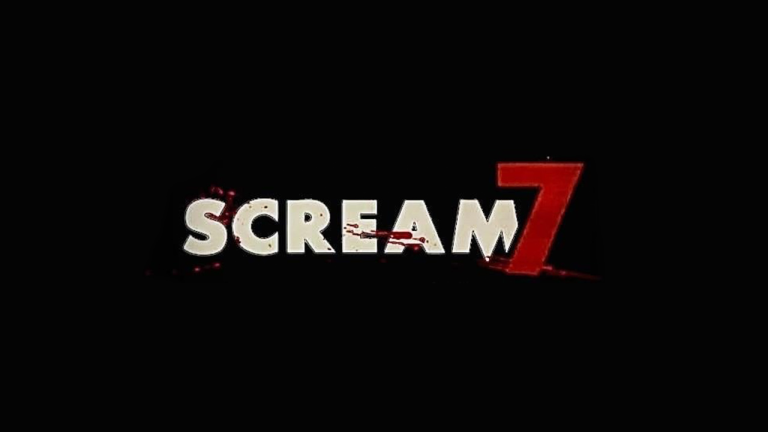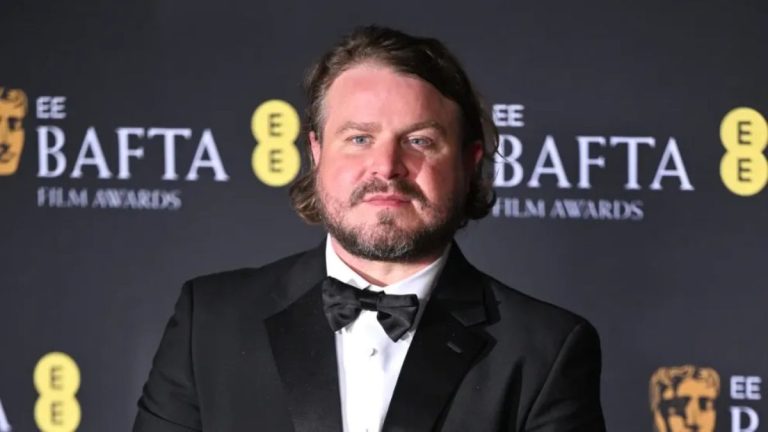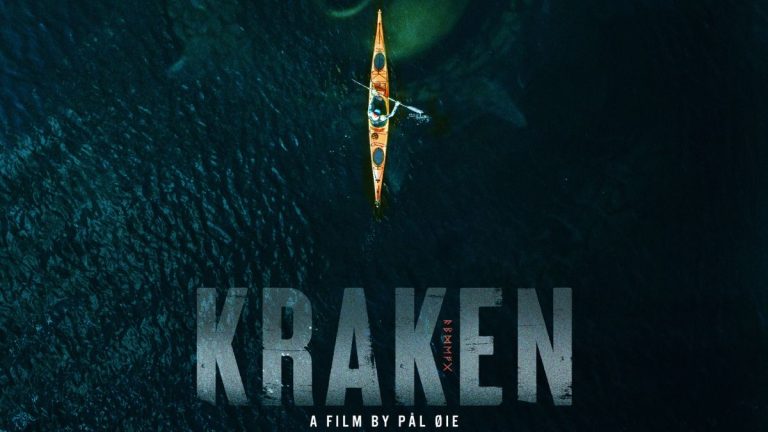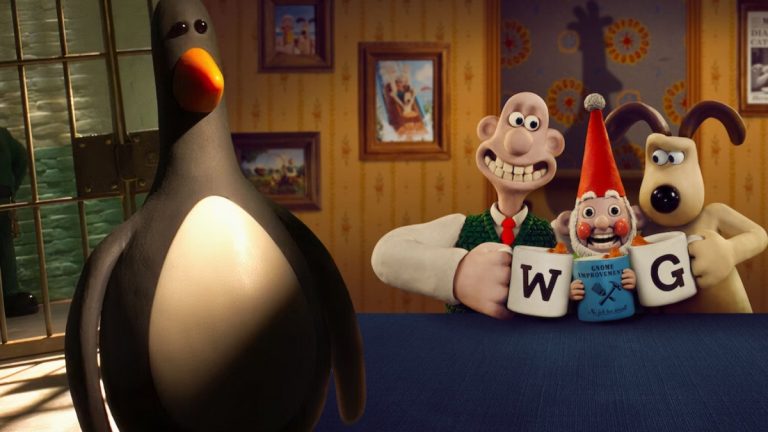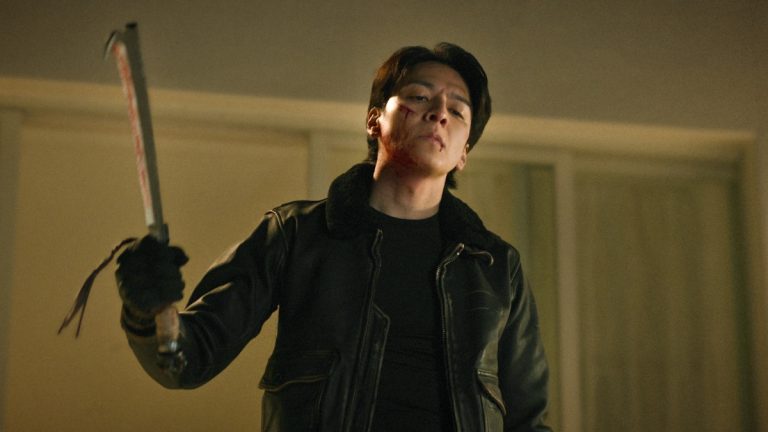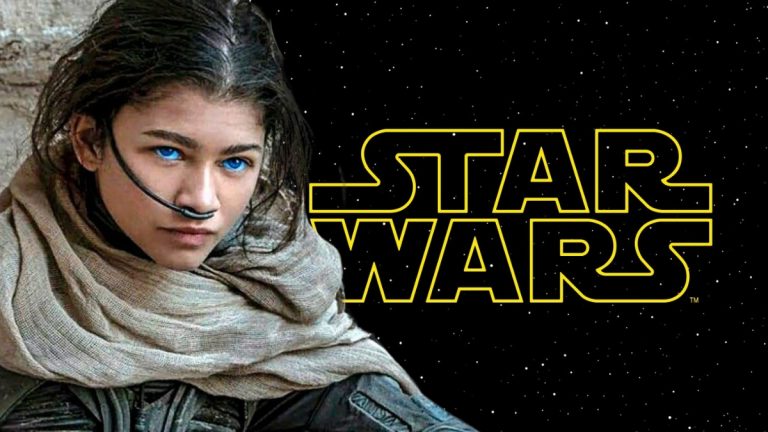Movies That Start With C: Alphabetical Adventures in Cinema
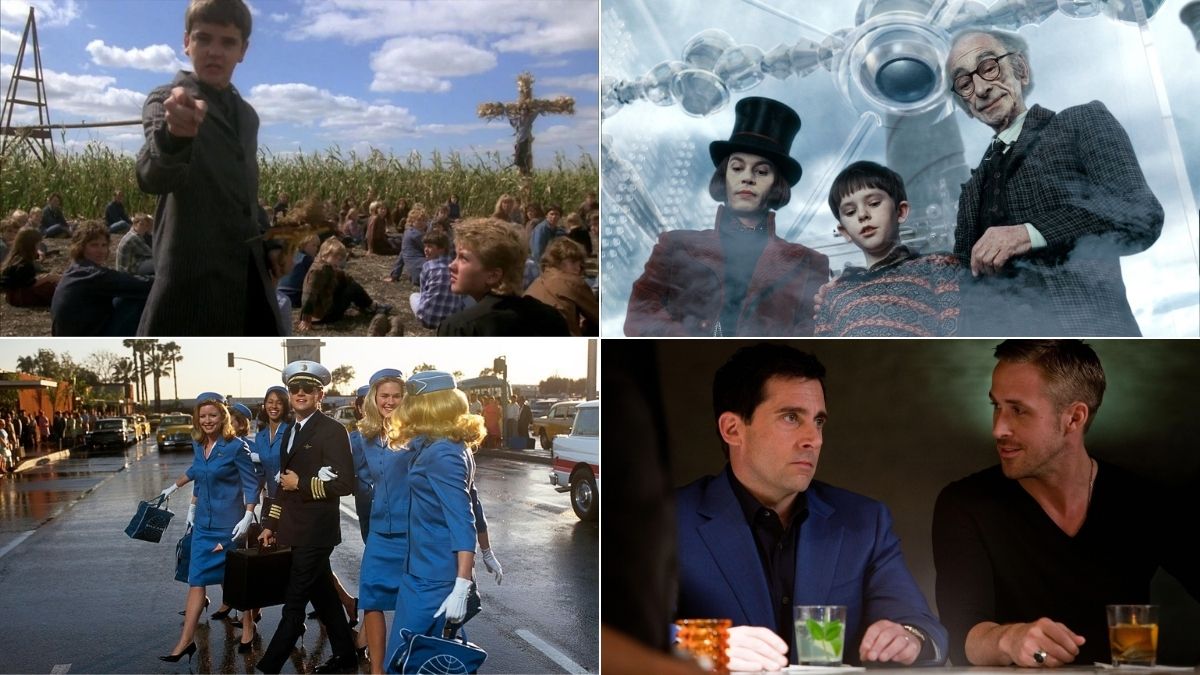
Embarking on a cinematic journey often begins with the alphabet. Today, we dive deep into movies that start with the letter ‘C’. From classic masterpieces to contemporary tales, this list brings together films that not only share a common initial but also offer a diverse range of stories, emotions, and artistic endeavors. Join us as we explore these alphabetical adventures in cinema.
Casablanca (1942)
Set against the backdrop of World War II, “Casablanca” is a cinematic masterpiece that intertwines romance, intrigue, and sacrifice. The film centers around Rick Blaine, an American expatriate who owns a nightclub in the Moroccan city of Casablanca.
When his former lover, Ilsa Lund, and her husband, Victor Laszlo, a fugitive Czech resistance leader, arrive in the city, the past reawakens, forcing Rick to confront old wounds and make momentous decisions. The film is iconic not only for its storytelling but also for its unforgettable lines and memorable scenes.
The ambiance of the cafe, the potent musical scores, and the backdrop of wartime urgency collectively offer an atmosphere that is palpable even to viewers many decades later.
“Casablanca” stands out as a testament to Hollywood’s golden age. Beyond its narrative allure, the film boasts a stellar cast with Humphrey Bogart and Ingrid Bergman delivering performances that are both touching and enduring.
The intricacies of love, morality, and politics weave seamlessly, offering audiences a poignant examination of the human condition. Its timeless appeal ensures that even in contemporary times, “Casablanca” remains a cherished classic, urging viewers to reckon with their own beliefs about love and sacrifice.
Citizen Kane (1941)
Often hailed as the greatest film ever made, “Citizen Kane” is Orson Welles’ magnum opus. The story is an exploration into the life and legacy of Charles Foster Kane, a wealthy newspaper magnate whose death begins the narrative.
As journalists delve into the mystery of his final word, “Rosebud,” the film unfolds through a series of flashbacks, revealing a complex portrait of a man consumed by ambition, power, and ultimately, isolation. The narrative’s non-linear structure, combined with groundbreaking cinematography, reshaped the boundaries of filmmaking.
Welles, in both directing and starring roles, presented a critical analysis of the American dream, the corrupting force of wealth, and the intricacies of human nature. The deep focus shots, innovative use of sound, and layered storytelling set “Citizen Kane” apart from its contemporaries.
While the film’s commercial success was initially modest, its subsequent evaluations by critics and scholars have cemented its status in cinematic history. It’s not just a film; it’s a study in art, narrative, and the exploration of a man’s soul.
Crouching Tiger, Hidden Dragon (2000)
A visual and narrative spectacle, “Crouching Tiger, Hidden Dragon,” directed by Ang Lee, masterfully blends martial arts with a compelling storyline. Set in 19th century Qing Dynasty China, the film delves into the lives of two warriors, Li Mu Bai and Yu Shu Lien, as they seek to retrieve a stolen sword and contend with their suppressed emotions for one another.
With breathtaking choreography, the fight sequences transcend mere action, becoming a poetic dance that narrates the characters’ internal struggles and desires.
The film’s title, “Crouching Tiger, Hidden Dragon,” signifies the hidden mysteries and tensions beneath the surface of a seemingly placid world. Ang Lee’s direction brought forth a masterpiece that was both an international commercial success and a critical darling.
The film challenged the conventional boundaries of the martial arts genre by emphasizing strong character development and an intricate narrative. Its universal themes of love, honor, and duty, combined with its phenomenal action sequences, made “Crouching Tiger, Hidden Dragon” a defining film of its time.
City of God (2002)
A visceral portrayal of life in the slums of Rio de Janeiro, “City of God” is a harrowing exploration of crime, poverty, and the human spirit. Directed by Fernando Meirelles and Kátia Lund, the film is based on real-life events, chronicling the lives of residents in the Cidade de Deus slum.
It follows the journey of Rocket, an aspiring photographer, and his childhood friend Lil’ Ze, who becomes a ruthless drug lord. As the narrative unfolds, the line between predator and prey becomes increasingly blurred.
Shot with a frenetic energy, “City of God” pulls no punches in depicting the violence and despair of its setting. Yet, amid the chaos, there are glimpses of hope, resilience, and the indomitable spirit of those who dream of a better life.
The film’s raw and authentic portrayal of its characters, combined with its compelling storytelling, offers a profound commentary on the cyclical nature of violence and the impact of socio-economic factors on individual destinies. “City of God” stands as a powerful testament to the human spirit’s ability to endure and rise above adversity.
Chinatown (1974)
“Chinatown,” directed by Roman Polanski and starring Jack Nicholson and Faye Dunaway, is a neo-noir masterpiece that delves into the dark underbelly of 1930s Los Angeles. The film follows private investigator J.J. Gittes as he’s hired to spy on a government official’s wife, only to find himself entangled in a web of corruption, deceit, and murder.
As Gittes unravels the intricate plot, he confronts the city’s deep-seated corruption and confronts his own past demons.
The film is not just a straightforward detective story. At its core, “Chinatown” is a poignant examination of moral ambiguity and the inescapable nature of past traumas. Polanski’s direction, coupled with Robert Towne’s masterful screenplay, creates an atmosphere thick with tension and suspense.
Nicholson’s portrayal of Gittes is both charismatic and deeply flawed, making him a captivating lead. “Chinatown” serves as a grim reflection of societal decay, where the boundaries between right and wrong are obscured, and the pursuit of truth often leads to more questions than answers.
Chocolat (2000)
Lasse Hallström’s “Chocolat” is a delectable fusion of romance, drama, and magical realism. Set in the conservative French village of Lansquenet-sous-Tannes, the story unveils when a mysterious woman, Vianne Rocher, and her daughter arrive and open a chocolaterie during Lent.
As they craft their delicious treats, Vianne’s chocolates do more than just satiate sweet cravings – they stir up desires, kindle dormant passions, and challenge the village’s rigid traditions. The film is a metaphorical dance between conservatism and free-spirit, between repression and expression.
Juliette Binoche’s portrayal of Vianne exudes warmth and charm, making her character an emblem of compassion and change against the backdrop of an austere setting.
“Chocolat” is more than a film about a chocolatier. It delves deep into the human psyche, highlighting our inherent need for freedom and our struggles against societal expectations. The narrative seamlessly blends the mundanity of village life with elements of enchantment, creating a world where chocolate can be a conduit for magic and transformation.
The film’s central message revolves around acceptance, tolerance, and the joys of embracing life in all its unpredictability. Its sweet and bitter moments, much like the chocolates Vianne crafts, leave a lingering taste long after the credits roll.
Catch Me If You Can (2002)
Steven Spielberg’s “Catch Me If You Can” is an exhilarating cat-and-mouse game based on the remarkable true story of Frank Abagnale Jr., one of history’s most audacious con artists. By the age of 19, Abagnale had successfully posed as a Pan American World Airways pilot, a Georgia doctor, and a Louisiana parish prosecutor, all while eluding the relentless pursuit of FBI agent Carl Hanratty.
Leonardo DiCaprio brilliantly embodies Abagnale, juxtaposing youthful charm with the cunning of a seasoned imposter, while Tom Hanks plays the dogged Hanratty with a mix of determination and begrudging admiration for his elusive quarry.
The film isn’t just a showcase of cons and escapades. It’s also a poignant exploration of a young man’s search for identity and belonging in the wake of his parents’ separation. Spielberg masterfully balances high-stakes chases with intimate moments, providing insights into the driving forces behind Abagnale’s actions.
The vibrant 1960s setting, combined with John Williams’ jaunty score, transports viewers into an era defined by its blend of innocence and deception. “Catch Me If You Can” is both an enthralling crime caper and a moving tale of loneliness and familial longing.
Children of Men (2006)
Alfonso Cuarón’s dystopian masterpiece, “Children of Men,” is a chilling vision of a future where humanity stands on the brink of extinction due to two decades of infertility. Set in a bleak 2027 Britain, society has collapsed into chaos, with the government imposing a strict authoritarian rule, all while battling immigrant insurgencies and pervasive despair.
At the heart of this world is Theo, played by Clive Owen, a disillusioned former activist who becomes humanity’s unlikely hope when he’s tasked with protecting a miraculously pregnant woman.
Cuarón’s vision is unflinchingly raw, crafting long, unbroken shots that immerse viewers into the palpable tension and dread of this dystopia. The film delves deep into themes of hope, faith, and the resilience of the human spirit in the face of overwhelming adversity.
Its political undertones, addressing issues of immigration, xenophobia, and state control, resonate strongly with contemporary global issues, making “Children of Men” not only a gripping cinematic experience but also a profound reflection on the world today.
Cool Hand Luke (1967)
In the annals of cinematic history, “Cool Hand Luke,” directed by Stuart Rosenberg, stands as a poignant commentary on individualism versus institutional authority. Paul Newman delivers one of his most memorable performances as Luke Jackson, a war veteran who is imprisoned for a minor crime and repeatedly defies the prison system’s dehumanizing authority.
Through his acts of defiance, Luke becomes an emblem of hope and resilience for his fellow inmates, challenging the oppressive nature of the establishment and inspiring them to question their own subservience.
The film’s narrative is interspersed with symbolic motifs, most notably the infamous egg-eating challenge, highlighting Luke’s tenacious spirit and indomitable will. Newman’s nuanced portrayal of the title character blends humor, rebellion, and vulnerability, making Luke a multifaceted representation of the human condition.
“Cool Hand Luke” serves as a reminder of the power of the human spirit to challenge and resist oppression, and the inevitable consequences that befall those who dare to defy the system. The film’s iconic line, “What we’ve got here is failure to communicate,” encapsulates its thematic essence, underscoring the perpetual tension between individual freedom and societal control.
Coraline (2009)
In the realm of animated films, Neil Gaiman’s “Coraline,” adapted and directed by Henry Selick, stands as a darkly whimsical masterpiece. It chronicles the journey of Coraline Jones, a young girl who, feeling neglected by her busy parents, stumbles upon a parallel universe through a door in her new home.
In this alternate world, Coraline is greeted by doppelgangers of her parents, with black buttons for eyes, who shower her with affection and present a seemingly perfect life. But beneath the veneer of this utopia lies a sinister truth, and Coraline must muster her courage to confront it.
While the film is visually stunning with its intricate stop-motion animation, its true strength lies in its narrative depth. “Coraline” serves as a cautionary tale about the dangers of seductive fantasies and the value of genuine love and connection.
It also touches on the universal theme of adolescence, where the desire for independence clashes with the longing for security. With its unique blend of childlike wonder and haunting undertones, “Coraline” is a modern classic that appeals to both children and adults, prompting them to question the nature of reality and the cost of our deepest desires.
Charlie and the Chocolate Factory (2005)
Tim Burton’s adaptation of Roald Dahl’s beloved children’s novel, “Charlie and the Chocolate Factory,” is a vivid reimagining filled with eccentricity and wonder. The story revolves around Charlie Bucket, a kind-hearted boy from an impoverished family, who wins a golden ticket to tour the mysterious chocolate factory owned by the enigmatic Willy Wonka.
As Charlie and the other winners navigate the fantastical factory, they are subjected to a series of moral tests, revealing their true characters amidst the splendor and mayhem.
Burton’s signature gothic and quirky style breathes new life into Dahl’s tale, with Johnny Depp delivering a memorably idiosyncratic performance as Willy Wonka. The film delves deeper into Wonka’s backstory, adding layers of complexity to his character and highlighting the themes of family, ambition, and redemption.
While retaining the moral lessons of the original story, Burton’s “Charlie and the Chocolate Factory” presents a darker, more whimsical world, reminding audiences of the thin line between dreams and nightmares and the profound impact of choices made in the pursuit of desires.
Captain Marvel (2019)
In the expansive Marvel Cinematic Universe, “Captain Marvel” stands out as a powerful origin story that not only introduces audiences to Carol Danvers but also reshapes the larger narrative arc of the franchise. Set in the 1990s, the film follows Danvers as she grapples with fragmented memories of her past and discovers her true identity amidst an intergalactic war between the Kree and the Skrulls. As she unveils the truth, Danvers transforms into Captain Marvel, one of the universe’s most potent heroes.
Beyond its action-packed sequences and cosmic adventures, “Captain Marvel” is a celebration of female empowerment and resilience. Brie Larson’s portrayal of the titular character captures the essence of a woman battling external adversaries and internal doubts, ultimately embracing her strength and purpose.
The film also delves into themes of friendship, identity, and the quest for truth, making it a multi-layered narrative that resonates with audiences of all ages. With its 90s nostalgia, stellar cast, and pivotal role within the MCU, “Captain Marvel” solidifies its place as a significant chapter in the superhero saga.
Clueless (1995)
“Clueless,” directed by Amy Heckerling, is a delightful and clever reimagining of Jane Austen’s “Emma,” set in the glamorous world of 1990s Beverly Hills. Cher Horowitz, flawlessly portrayed by Alicia Silverstone, is a wealthy and fashionable high school student who enjoys playing matchmaker for her friends.
Guided by a misplaced sense of altruism and often hilarious naivety, Cher navigates the complexities of adolescence, love, and self-awareness, all while delivering iconic one-liners and sporting unforgettable outfits.
While on the surface, “Clueless” appears to be a light-hearted teen comedy, it is, in essence, a sharp social satire that explores the superficiality and genuine charm of its characters. The film touches on themes of popularity, conformity, and the pursuit of genuine connections in a materialistic world.
With its witty dialogue, colorful aesthetics, and memorable characters, “Clueless” has endured as a cultural touchstone, capturing the essence of a generation while providing timeless insights into the human experience.
Crazy, Stupid, Love (2011)
“Crazy, Stupid, Love,” directed by Glenn Ficarra and John Requa, is a heartwarming and comedic exploration of love’s multifaceted nature. The narrative centers around Cal Weaver, played by Steve Carell, a middle-aged man reeling from his wife’s request for a divorce.
In his quest to rediscover his manhood and understand the modern dating world, Cal crosses paths with Jacob, a suave ladies’ man portrayed by Ryan Gosling, who takes Cal under his wing. As their worlds intertwine, the film delves into various forms of love, from youthful infatuations to deep-rooted marital bonds.
With a stellar ensemble cast, “Crazy, Stupid, Love” brilliantly balances humor with genuine emotional depth. The narrative weaves together multiple storylines, painting a comprehensive picture of love’s joys, sorrows, and absurdities.
It underscores the idea that while love can be messy and unpredictable, it remains a force that binds people together, fueling hope and prompting personal growth. By portraying characters from different walks of life, the film offers a poignant commentary on the universality of love and the challenges and triumphs that accompany it.
Chicago (2002)
Set against the backdrop of Prohibition-era Chicago, Rob Marshall’s “Chicago” is a dazzling musical extravaganza that delves into the world of showbiz, scandal, and the quest for fame. The film revolves around Roxie Hart and Velma Kelly, two murderesses who find themselves on death row.
As they vie for the spotlight and the affections of smooth-talking lawyer Billy Flynn, they navigate the treacherous waters of the media circus, where infamy is as coveted as innocence.
“Chicago” is a scintillating commentary on celebrity culture and the lengths individuals go to achieve and maintain their place in the limelight. Its razzle-dazzle musical numbers, coupled with its biting satirical edge, create a cinematic experience that is both entertaining and thought-provoking.
With standout performances from Catherine Zeta-Jones, Renée Zellweger, and Richard Gere, the film captures the essence of the Jazz Age while drawing parallels to contemporary obsessions with fame and notoriety. Through its song, dance, and narrative depth, “Chicago” reminds viewers of the fleeting nature of fame and the cost of ambition in a world enthralled by spectacle.
Cape Fear (1991)
Martin Scorsese’s “Cape Fear” is a harrowing study of revenge, justice, and the blurred lines between right and wrong. At the center of this narrative is Max Cady, played with bone-chilling intensity by Robert De Niro. Fresh out of prison, Cady embarks on a relentless pursuit of his former lawyer, Sam Bowden (Nick Nolte), whom he believes betrayed him.
But Cady’s methods of vengeance are sinister and psychological, targeting not just Bowden but also his family, played by Jessica Lange and Juliette Lewis. The film masterfully builds tension as the Bowdens find themselves trapped in a nightmare, with the menacing shadow of Cady ever-present.
Scorsese’s direction, combined with De Niro’s chilling performance, elevates “Cape Fear” from a mere thriller to a dark exploration of the human psyche. The film delves deep into the complexities of morality, the failings of the justice system, and the lengths individuals will go to protect their loved ones.
The atmospheric score by Bernard Herrmann, posthumously adapted by Elmer Bernstein, further adds to the movie’s haunting ambiance, creating a cinematic experience that leaves viewers on the edge of their seats long after the credits roll.
Crimson Tide (1995)
Set within the claustrophobic confines of a U.S. Navy submarine, “Crimson Tide” offers an adrenaline-pumping ride through a potential nuclear catastrophe. Directed by Tony Scott, this gripping drama pits two powerhouse actors, Denzel Washington and Gene Hackman, against one another in a battle of wills and ideologies.
Hackman plays the seasoned Captain Frank Ramsey, while Washington portrays the morally upright Executive Officer Ron Hunter. When they receive ambiguous orders regarding a nuclear launch during a Russian rebellion, the two clash, leading to a mutiny and a race against time.
“Crimson Tide” isn’t just a tale of military strategy; it’s a profound exploration of leadership, duty, and the ethical dilemmas faced during moments of crisis. The close-quarters of the submarine amplify the tension, with every decision bearing the weight of potential global consequences.
As Hunter and Ramsey lock horns, their differing philosophies become emblematic of larger debates about authority and responsibility. The film, bolstered by its strong performances and tight direction, challenges viewers to consider where they would stand when faced with the unthinkable.
Children of the Corn (1984)
Derived from Stephen King’s eerie short story, “Children of the Corn” plunges viewers into the isolated town of Gatlin, Nebraska, where children have taken a dark turn under the influence of a mysterious entity. Following a mass adulticide, the children, led by the chilling Isaac, worship a sinister deity known as “He Who Walks Behind the Rows.” As outsiders Vicky and Burt stumble upon this town, they quickly find themselves ensnared in a horrifying struggle for survival.
While the premise is rooted in horror, “Children of the Corn” is also a meditation on the dangers of blind faith and the consequences of unchecked power in youthful hands. The film’s desolate setting, combined with its haunting score, amplifies the atmosphere of dread and foreboding.
The children, with their unwavering conviction, serve as chilling antagonists, reminding viewers of the terrifying extremes of misguided belief. Over the years, this cult classic has spawned numerous sequels, each delving deeper into the lore of the malevolent force corrupting Gatlin’s youth.
Caddyshack (1980)
“Caddyshack,” directed by Harold Ramis, is a comedic romp that takes viewers inside the quirky world of the Bushwood Country Club. With an ensemble cast featuring Chevy Chase, Bill Murray, Rodney Dangerfield, and Ted Knight, the film provides a hilarious glimpse into the shenanigans of golfers and caddies alike.
Whether it’s Murray’s bumbling groundskeeper Carl Spackler on a relentless quest to exterminate a mischievous gopher or Dangerfield’s Al Czervik causing uproar with his brash antics, “Caddyshack” delivers a steady stream of laughs from start to finish.
More than just a series of comedic sketches, “Caddyshack” offers satirical commentary on the class dynamics and snobbery prevalent in the world of golf. The film juxtaposes the pretentiousness of the Bushwood elite with the grounded realities of the working-class caddies, creating a delightful clash of cultures.
With its iconic one-liners, unforgettable characters, and absurd situations, “Caddyshack” has secured its place in the annals of comedy history, reminding viewers of the inherent humor found in the world of sports and society.
Collateral (2004)
Michael Mann’s “Collateral” is a gripping nocturnal odyssey through the streets of Los Angeles, merging the worlds of crime and the mundane. Tom Cruise, shedding his typical heroic persona, immerses himself into the role of Vincent, a cold and calculating hitman.
Jamie Foxx’s Max, a seemingly average taxi driver, finds himself inadvertently ensnared in Vincent’s dark web when he becomes the hitman’s unwitting chauffeur for the night. As the duo navigate the city, a tense and unlikely bond forms, leading to a series of intense, action-packed confrontations.
At its core, “Collateral” is a character study, delving into the psyches of two diametrically opposed individuals. Vincent’s worldview, defined by his profession, contrasts starkly with Max’s dreams and aspirations, yet their interactions blur the lines between predator and prey.
Mann’s direction, combined with the moody cinematography, paints Los Angeles as a character in itself – a sprawling urban landscape filled with shadows and secrets. The film’s tight pacing, combined with its philosophical underpinnings, makes “Collateral” more than just a thriller; it’s a contemplation on fate, choices, and the duality of human nature.
MORE FROM VOICE FILM

